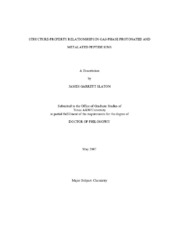| dc.description.abstract | Peptide synthesis and metal doping, combined with mass spectrometric and ion
mobility spectrometric techniques, have provided a picture of the fragmentation behavior
of a large field of homologous peptide ions, represented as XVGVAZG, where the X
amino acid is either arginine, histidine, lysine, aspartic acid or tryptophan and the Z
amino acid is proline, glycine, serine, or histidine. These homologous peptide ions have
been carefully selected to probe the effects of charge site location and secondary
interactions upon the fragmentation chemistry of peptides. Peptides were synthesized on
solid support, doped with appropriate metal salts to attach Li+, Na+, K+, Cu+ and Ag+ ,
and then examined using ion mobility spectrometry, and tandem mass spectrometry,
both high energy collision induced dissociation (CID) and photodissociation using 193-
nm laser light. Molecular dynamics calculations enabled me to derive candidate
structures for these ions that agree with the ion mobility data for the ions.
The fragmentation chemistry and structure selection of the first group of
peptides, those that contain a proline residue, indicate that the presence of high proton
and high metal ion affinity residues at the N-terminal position of the peptide direct the
fragmentation of the highly charge-solvated ions according to a charge site directed mechanism. Further examples of charge-solvated structures and charge-directed
fragmentation are shown for peptides where the sixth amino acid residue has been
replaced with glycine or serine, eliminating the influence of the proline residue in the
sixth position. Photodissociation of the peptides indicates that the position of valine
residues along the peptide backbone influences the types of abundant fragment ions
observed and ai and dai ions are observed exclusively at the site of valine residues. This
observation continued, even when the position of the valine residues were altered by
synthesis, leading me to the conclusion that the fragmentation of these peptides. The
study was expanded to include significantly more complex peptides, those containing
second high proton and high metal ion affinity residues, and though the data are
complex, the influence of charge solvation in those systems is strong as well, according
to my analysis of the candidate structures obtained and the types of fragment ions
observed. | en |


